Pic du Midi is the centrepiece of Europe's only International Dark Sky Reserve. Image Credit: Pic du Midi
It's perhaps the finest view of any in Europe for stargazers and astronomers, and the perfect place for no less than nine telescopes.
From a vast terrace atop a 2,877m peak deep in the French Pyrenees it's possible to look to the northern, eastern and southern horizons (the west is partially blocked by some huge telescope domes) across 612 square kilometres of the International Dark Sky Reserve Pic du Midi (known as RICE).
Recognised by the International Dark Sky Association only last year, RICE contains 251 communities, though its core area contains no permanent lights.
Having the Pyrénées National Park directly to the south helps, too.
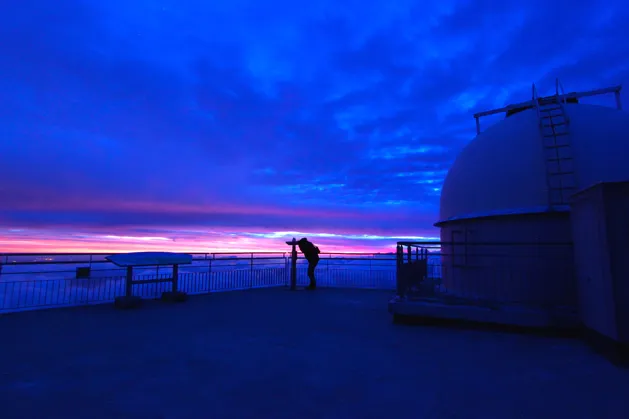
RICE is the only International Dark Sky Reserve in continental Europe, and 72 per cent of it is above 2,000m in altitude.
“Autumn is the best time of year to visit. There's a special pureness to the air at this time of year.
In the winter season it completely changes – this is a high mountain zone,” says Jérôme Brun, Director of Marketing at Pic du Midi, who meets me in the Hautes-Pyrénées village of La Mongie to start our journey to the Nuit Au Sommet (Nights At The Summit), a package offered by the Pic du Midi Observatory (€299 per person or €399 per couple, www.picdumidi.com).
However, today the huge cable car that takes tourist, astronomers, water and food to the top is being re-painted in preparation for the busy winter ski season, and is out of action.
Luckily, we don't have to revert to the ways of the pioneering astronomers; from the first dome being built at Pic du Midi in 1908 until the first cable car was constructed in 1952, astronomers had to hike for up to five hours.
The second half of Pic du Midi's history is more sedate; even without the cable car, we pile into a convoy of 4x4s to make the trip.
Jérôme is making this trip for the third time today.

It's some journey; after a gentle drive past many wannabe cyclists to the ridge at the Col du Tourmalet (of Tour De France fame) we take a dirt track that heads far higher, skirting sheer drops and switchbacks as it heads past the gorgeous Lac d’Oncet lake at 2,253m and through the clouds to the peak.
It's arguably much more fun that any cable car.
“Can you believe this road was open to the public until the 1996?” says Jérôme.
I can't; it's strewn with rubble and best taken at just a few miles per hour.
Such are the rockfalls and avalanches in this region that the route reopens in June only after six weeks of work to clear the track.
It's peppered with debris.
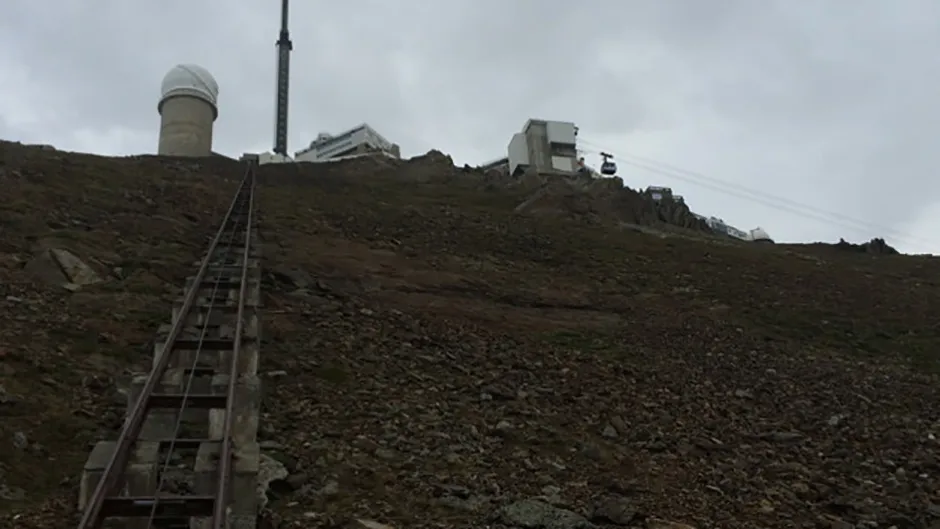
Nerves have settled by the time we reach a flat area near the top.
We're just a few hundred feet below what now looks like a huge installation above.
“It's going to be cloudy tonight but get up early around 05:00 and it will be clear,” says Jérôme before leaving us there to drive back down.
The final part of the journey for us is via a small funicular platform that rises slowly to arrive at a platform perched below a truly awesome sight; the 28m-tall Téléscope Bernard Lyot (TBL), a 2m Schmidt-Cassegrain, which is the main reason (apart from the 100,000+ tourists each year) that the Pic du Midi is still a working observatory.
It looks like an ice cream cone.

Used to observe the furthest galaxies, the TBL is one seriously powerful telescope; if Earth wasn't round it could read the time on Big Ben in London.
Creeping up the three flights of stairs strung between the cold (so cold!) double-layered concrete walls of the TBL's dome gets us underneath this behemoth.
It's merely the mirror that measures two metres, with its casing stretching 30m above.
The TBL has largely been used to study distant galaxies, including Andromeda, though last year astronomers uncovered a magnetic field on Vega – one of the brightest stars – using the NARVAL spectropolarimeter on its top.
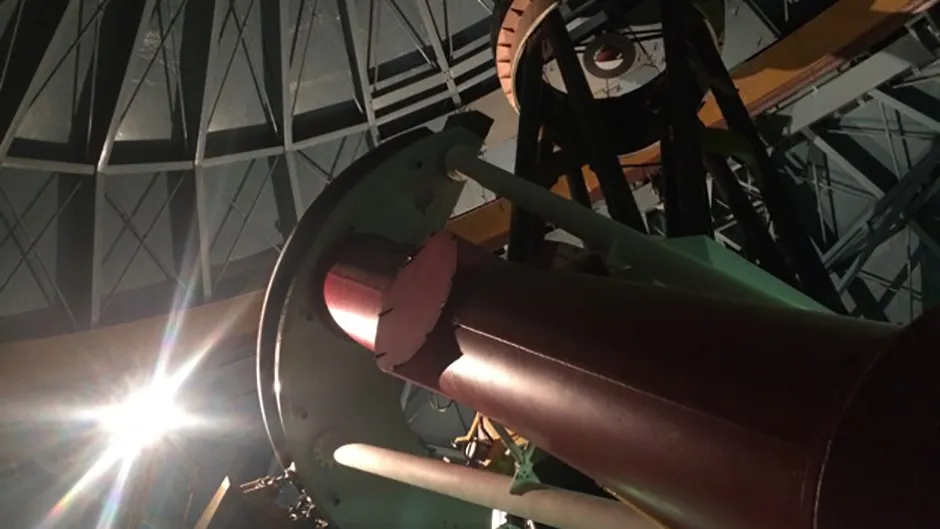
There are other claims to fame at Pic du Midi, too.
A one-metre Gentili telescope, easily seen from the terrace (and painted to look like an igloo), was installed by NASA in 1963 to map the Moon ahead of the Apollo landings.
It's now used to observe the planets.
A siderostat and coronagraph are also here to study the sun – a popular activity at the Pic du Midi – while both the T60 dome (which houses a 60cm telescope and is painted to look like stormtrooper from Star Wars) and the Charvin dome (which hosts a 12-inch Meade LX200R) are available for amateur astronomers and students to hire.

If you want to use any of the telescopes, it's best to arrange this beforehand, though the Charvin dome can be used during the Nuit Au Sommet.
As well as a tour of some of the telescopes, the evening includes stargazing, dinner, wine and a lecture.
On my visit, the clouds refused to budge for the evening, so instead of guided stargazing there was dinner and a lecture on the Pic du Midi's work, as well as Earth's place in the cosmos.
However, since it's all conducted in French (there's very little English spoken in this most southerly tip of France), it's worth skipping this to explore Pic du Midi on your own.
It's also worth downloading the audio guide in English available within the Pic du Midi app for iOS and Android smartphones, and visiting the small museum, which uncovers the remarkable human stories behind Pic du Midi.
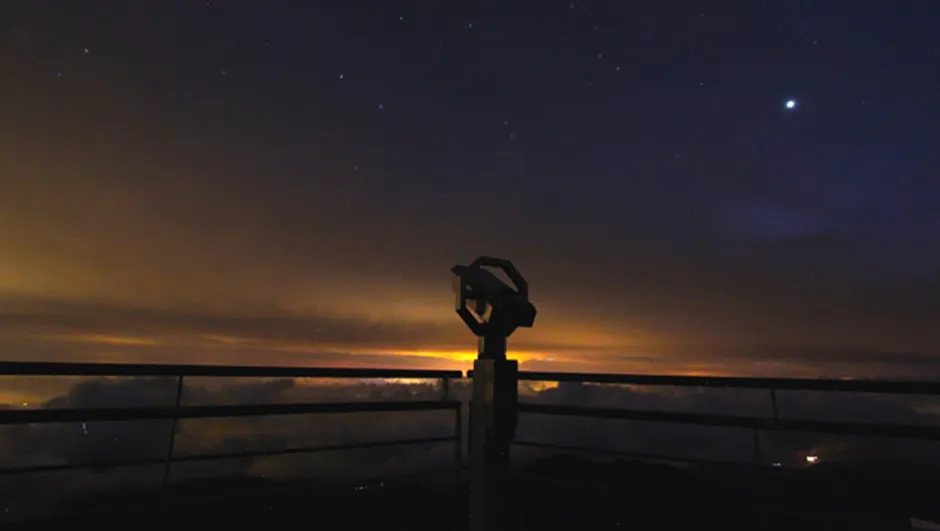
Pic du Midi feels like a Cold War relic, its network of tunnels and passageways cladded with concrete to keep out the cold – and the light.
As a visitor, you get an electronic pass and the freedom to go through any door that the card lets you into (excluding the top secret French military-owned building behind the TBL).
However, all you've really got to do is find your room (clean, modern and simple bedrooms in the Antares Quarter – all with stunning views) and locate the door to the terrace.
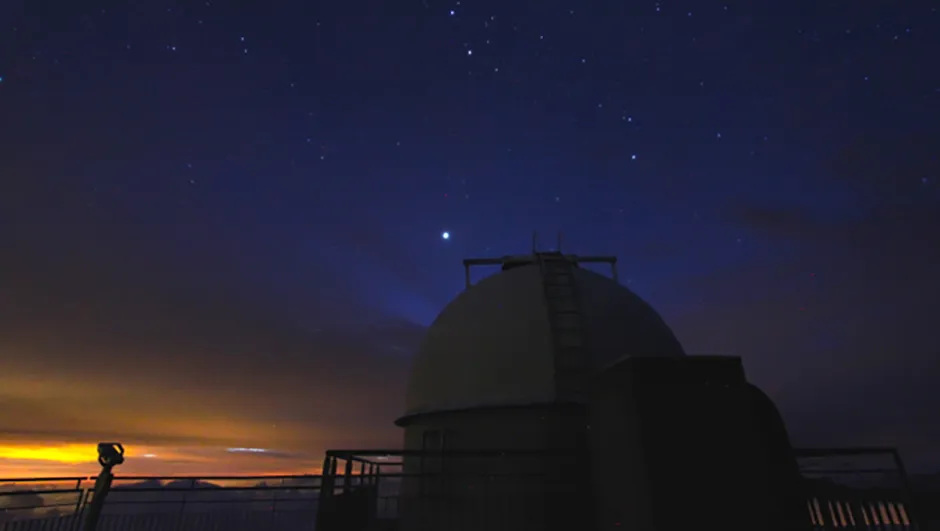
The terrace is the perfect place to spend the early hours; I was out at 05:00am just in case of clear skies.
It was cold, around freezing (it can get down to -25ºC during winter), but I wrapped up warm and got lucky; some high cloud remained, but despite that the eastern sky was beaming, and a classic winter sky-scape was up; the awesomely bright Sirius pointing to a crisp Orion, with the Orion Nebula hanging spectacularly below.
Below me were a few tiny orange lights of La Mongie, though to call that light pollution would be an exaggeration.
Much brighter was the Pleides cluster poking through the clouds and, opposite, Jupiter was rising spectacularly.
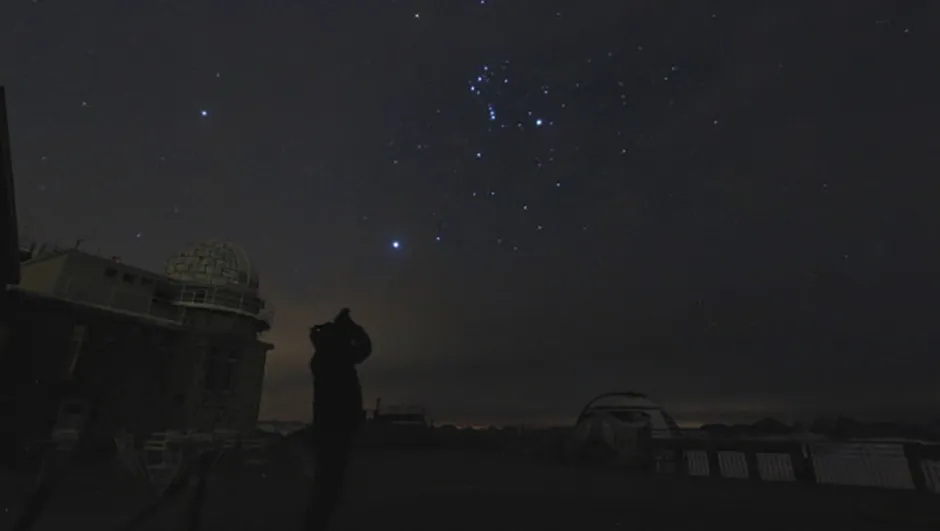
After snapping a few pictures of the incredibly picturesque domes in the starlight, I spent some time with my binoculars circling Orion – for the first time since it disappeared from the evening skies back in April – and the low eastern horizon.
I had a planetary goal in mind, and as the sun's first rays began to suggest a sunrise, there it was; Venus, shining a bright, deep orange for perhaps a minute or two as it rose over distant Toulouse, before being swallowed up by clouds in the gathering dawn.
Pic du Midi is a magical place to experience a sunrise – and there's plenty of room for cameras, tripods and telescopes, though sadly it wasn't possible to use any of the latter during my visit.

A Nuit Au Sommet is a fabulous place to spend the night, and the Pic du Midi has ambitions to expand as a tourist destination; it's hardly known outside of France.
There are plans to convert the ruins of an old hostelry called Les Laquets just below the peak into a hotel, and even construct a short cable car to a nearby peak, while in winter it's already possible to take the cable car up and ski down, or, in summer, tackle the slopes on a mountain bike.

A night at the Pic du Midi may be the highlight for stargazers, but the entire Hautes-Pyrénées region around it – which is entirely within the International Dark Sky Reserve – is a superb place for seeking starry skies.
I was based in the gorgeous village of Argelès-Gazost, itself surrounded by dark sky countryside that's any astro-landscape photographer's dream setting.
From the homely Villa du Parc (from £44) on the fringes of the town – and with a large, dark garden ideal for wandering with a pair of binoculars – the Milky Way was visible pouring down through the Summer Triangle asterism towards a mountainous horizon.
Nearby Hotel Miramont (from £42) is also a great place to stay, and has a fine restaurant.
For stargazers coming down from the Pic du Midi, the valleys of the Hautes-Pyrénées area offers the warmest of welcomes at the geothermal spa complexes of Bains du Rocher in Cauterets and Les Jardin des Bains in Argelès-Gazost.
It's the perfect end to a few days spent soaking-up the starry night skies at Europe's only International Dark Sky Reserve.
Getting there
Ryanair flies from London Stansted to Lourdes (from £40) while easyJet flies from Bristol to Toulouse (from £65). Pic du Midi.
The Nuit Au Sommet happens almost every day from June and September, and all Bank Holidays and weekends throughout the year.
See the websites of Pic du Midi and Hautes-Pyrénées Tourism for more details.
